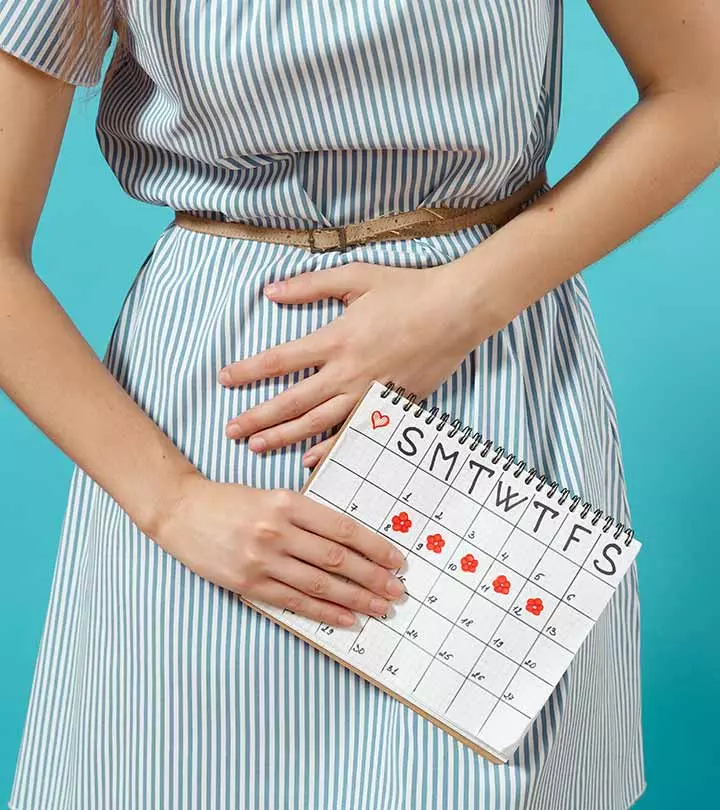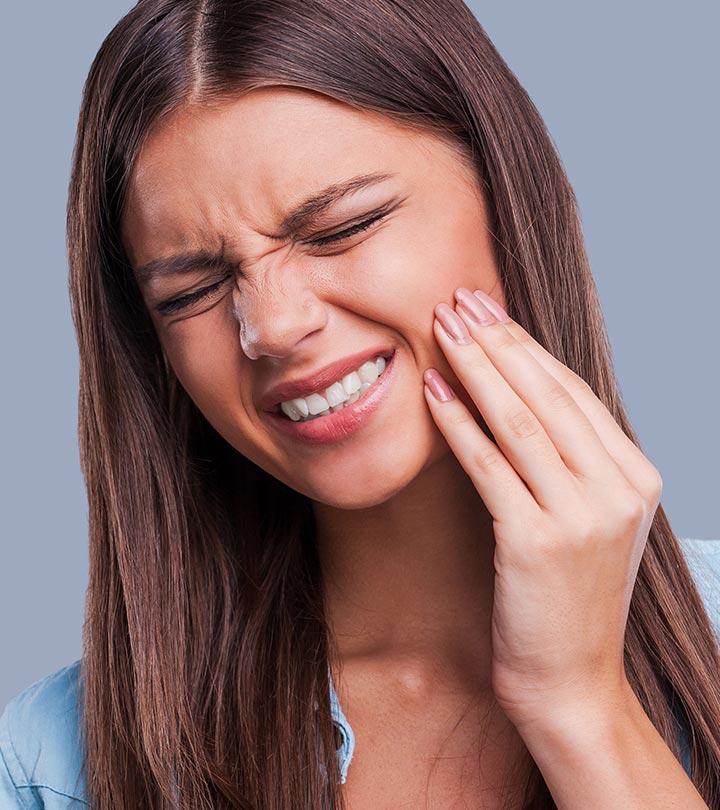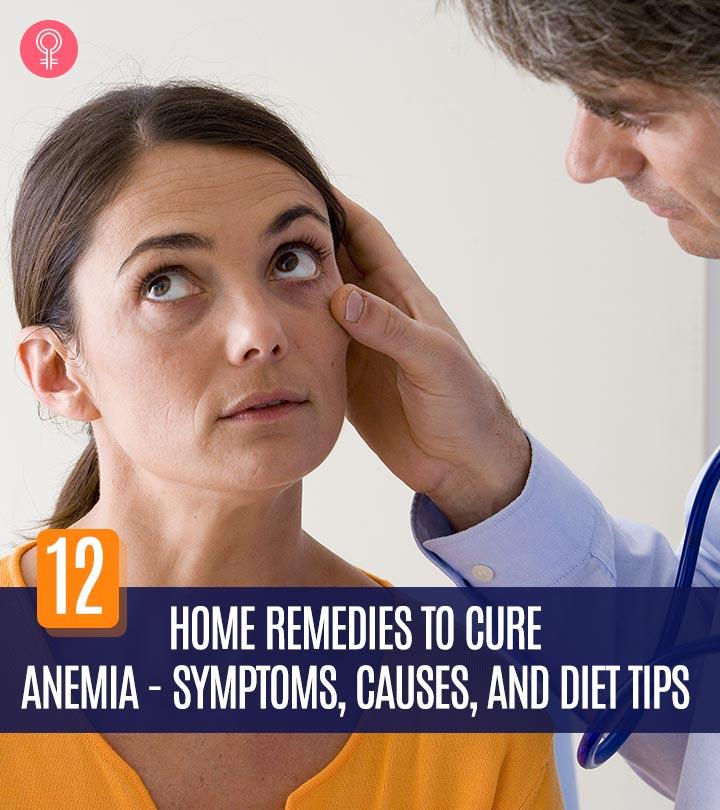7 Easy Home Remedies To Stop Bleeding Quickly
Learn easy ways to aid blood clotting before you reach the ER to get the wound dressed.

Image: Shutterstock
Cuts and bruises are very common, especially if you have a child around or if you practice a sport. Luckily, you can easily treat a minor wound with natural and herbal home remedies to stop bleeding. The quicker you attend to an injury, the quicker it may heal. Major cuts or serious injuries, however, require first aid and prompt professional medical assistance. Read on to find out how to properly attend to a wound that is bleeding and when to call for a physician’s help during a health emergency.
In This Article
Home Remedies To Stop Bleeding From A Skin Wound
If you are wondering what stops bleeding fast, then here are some methods that may help you stop or reduce bleeding from a wound:
- Apply Pressure With Your Hands
Put a clean piece of cloth or a sterile gauze on the cut and press down with either one or both hands. Keep the steady pressure on for 5 minutes, or until the wound has stopped bleeding. Avoid the temptation to peek beneath the cloth as relieving pressure too soon may interfere with the process. If this method is sufficient to stop the bleeding from the wound, make a gauze dressing on the wound to maintain the pressure after you have removed your hands (1).
 Trivia
Trivia- Raise The Affected Area Above The Heart
To stop a bleeding cut on your arm, raise it up, so that is it above the heart. If the cut is on your leg, you can use a couple of pillows to put your leg or feet up at an elevated angle. This self-care technique enables you to utilize the power of gravity to slow down and reduce the outflow of blood (1).
- Know Your Pressure Points
There are several arterial pressure points on the body, where the artery lies just next to the bone and close to the surface of the skin. If elevation and applying direct pressure together fails to stop the bleeding, you can also press on the appropriate pressure point that lies above the bleeding wound. A few examples of pressure points are described below (1):
- The pressure point to stop bleeding from a wound in your arm lies between your biceps and triceps on the underside of your upper arm. To identify the spot, put your fingers on this point and you will be able to feel a strong pulse there.
- For a bleeding wound on the leg, apply pressure to the femorali Associated with the femur, a bone found in the thigh. It is considered to be the longest bone in our body. artery located within the femoral triangle. You can find the femoral triangle by placing your hands on the inner side of the upper thigh, bordering the male or female genitalia.
- Dried Or Fresh Yarrow
Yarrowi Eurasian having feathery leaves and white or pink flowers. This is used for its fragrance and also as a herb. has been traditionally used for its medicinal properties which include wound healing. A recent animal study shows that yarrow is effective in healing wounds (2). For bleeding control, you can use either dried yarrow powder or crushed leaves of the plant used in traditional medicine from your herb garden. Wash the wound with water and sprinkle yarrow powder or place the crushed leaves and wrap the wound with gauze. Alternatively, you can wrap a fresh clean yarrow leaf around the wound to stop bleeding and accelerate healing. You can also use yarrow leaves to stop a nosebleed. However, don’t use yarrow if you are pregnant (3).
 Trivia
Trivia- Used Tea Bag
A used tea bag can be reused as one of the most incredible home remedies for bleeding control, especially for healing bleeding gums. A study found that green tea extract wrapped in gauze could effectively reduce the bleeding after tooth extraction (4).
- Aloe Vera Gel
Aloe vera has astringent properties as well as antiseptic properties. You can apply aloe vera gel on gauze and wrap it around a minor wound to help the wound close quickly and promote healing. A study on rats found that acemannani A compound found in aloe vera leaves and has gastrointestinal, antineoplastic, antiviral, and immunostimulant properties. , a bioactive compound in aloe vera, can speed up wound closure and growth in cells that promote recovery (5). However, further studies regarding aloe vera are needed as there is contradictory evidence regarding aloe as a suitable wound dressing as it may lead to allergic responses like rashes, skin irritation, and redness (6).
- Petroleum Jelly And An Open-weave Gauze
Petroleum jelly provides the moisture needed on the wound bed to facilitate healing. To stop bleeding, take a piece of open-weave gauze and apply petroleum jelly to it. Then wrap it on the wound. The gauze is a highly absorbent material that will absorb the blood as well as facilitate clotting due to the contact. The petroleum jelly will help it stick to the wound and provide moisture and act as a barrier (7).
- Witch Hazel
Witch hazel is derived from the dried leaves and barks of the plant of the same name. It has natural astringent properties that may help reduce bleeding from minor cuts (8). Anecdotal evidence suggests that the application of witch hazel to a bleeding wound may constrict the blood vessels, slowing down or stopping the bleeding. To use witch hazel to stop the bleeding, clean the affected area gently with mild soap and water. Then, apply a small amount of witch hazel with a cotton ball or pad and press it against the wound. Ensure that you conduct a patch test before using witch hazel to avoid any adverse reactions.
The first step for healing a wound is to know how to stop the bleeding and apply it correctly. During this home treatment process, it is also vital to remember certain steps that can prevent it from getting infected. Let’s see what those are.
Tips To Preventing Infection
A wound gets infected when there are more bacteria in it than the body can support. This leads to inflammation and an overall delay or a halt in the wound-healing process. For a wound to heal, it needs to have a clean, warm, and moist environment. The following wound care steps can help you achieve that for minor cuts or scrapes:
- Wash the wound with cool water and use soap to clean the surrounding area. Be careful not to get any soap in the wound. After the wash, gently pat it dry with a clean cloth or a sterilized cotton ball.
- Remove any dirt or particles like sand, gravel, etc. that have gotten into the wound with sterilized tweezers, if possible. You can use rubbing alcohol to sterilize the tweezer.
- Once the wound is clean, apply an antiseptic like aloe vera, honey, or an over-the-counter ointment.
- Dress the wound using clean gauze.
It is essential that the wound is clean before it is dressed. In case you are challenged by a wound that has debris inside that is difficult to remove, consult your physician after you have stopped the bleeding. There are some other instances where it may be necessary to seek medical help when dealing with a wound.
When To See A Doctor
The home remedies to stop bleeding are applicable as first aid. For some wounds, that is enough and for some others, it is not. Go to a hospital immediately in case of the following:
- Applying pressure for several minutes doesn’t stop the bleeding.
- The bleeding is from an arterial wound and the blood comes out in rhythmic spurts.
- The wound is very deep or very large.
- An object is embedded in the wound.
- The wound is in the eye or the stomach.
- The wound is in the chest or the neck and is causing breathing difficulty.
- The wound is a result of a road accident.
- The injured person is in shock.
- The injury is from an animal or human bite.
- It has been 5 years or more since the last tetanus shot.
- The wound develops signs of infection like increased pain, swelling, warmth, redness, yellowish pus that oozes out, and fever.
Luckily, for minor wounds, if you follow what you have learned regarding how to stop a cut from bleeding and prevention of infection, healing can happen quickly. How quickly? Let’s see.
How Long Should A Cut Take To Stop Bleeding?
Your body prepares to stop the bleeding from a wound within seconds of an injury, so a minor wound should stop bleeding within 1-5 minutes. However, in the case of a major injury that involves severe and uncontrollable blood loss, the natural blood clotting process of the body will not be able to stop the bleeding (9), (10).
Infographic: 5 Effective Ways To Quickly Stop A Wound From Bleeding
Blood from a deep wound can be scary, not to mention the risks of infection. But if the first aid kit isn’t around, you can try some simple methods and natural antiseptic and anti-inflammatory remedies for a faster resolution. In the infographic below, we have listed a few of those that can help stop the bleeding quickly. Check it out!

Illustration: StyleCraze Design Team
To conclude, a wound needs to stop bleeding as the first and most crucial step towards recovery. Home remedies to stop bleeding can help you manage minor cuts and scrapes. In some cases, these can also help you provide the essential first aid needed for major wounds before medical help arrives. Elevating the wound and applying pressure on it are both tried and tested methods to stop bleeding. Before you dress up a wound, you also need to clean it well so that the risk of infection is reduced. In some cases, a wound cannot and should not be treated at home. Timely medical intervention can be life-saving in these cases.
Frequently Asked Questions
Does baking powder stop bleeding?
Anecdotal evidence suggests that baking powder may help stop bleeding from minor knicks and scrapes. However, there is a lack of scientific research to validate its efficacy or safety on bleeding wounds.
Can you stop bleeding with flour?
Cornflour or flour may help stop bleeding from minor wounds due to its drying properties. However, there is no research to establish the efficacy or safety of using flour to stop bleeding.
Can you use sugar to stop bleeding?
Yes, you may use sugar to stop bleeding from minor cuts like those on your lips.
Can Vaseline stop bleeding?
No, Vaseline does not stop bleeding.
Key Takeaways
- You can treat the bleeding cuts or scrapes effectively with some home remedies for wound care.
- A used teabag, aloe vera gel, petroleum jelly, and applying pressure on the cut may stop the bleeding.
- You should wash the wound with cool water, apply antiseptics, and dress the wound to prevent infection.

Image: Stable Diffusion/StyleCraze Design Team
Accidents happen, but knowing how to stop bleeding from cuts and wounds is crucial. Check out this video to learn how to handle emergency situations effectively and ensure your safety.
References
Articles on StyleCraze are backed by verified information from peer-reviewed and academic research papers, reputed organizations, research institutions, and medical associations to ensure accuracy and relevance. Read our editorial policy to learn more.
- MANAGEMENT OF BLEEDING AND OPEN WOUNDS IN ATHLETES
https://www.ncbi.nlm.nih.gov/labs/pmc/articles/PMC3362987/ - Effects of Yarrow Extract on Wound Healing in Rabbits
https://www.researchgate.net/publication/288067194_Effects_of_Yarrow_Extract_on_Wound_Healing_in_Rabbits - Yarrow (Achillea millefolium Linn.) a herbal medicinal plant with broad therapeutic use – A review
https://www.researchgate.net/publication/285763271_Yarrow_Achillea_millefolium_Linn_a_herbal_medicinal_plant_with_broad_therapeutic_use_-_A_review) - Evaluation of the Effect of Green Tea Extract on the Prevention of Gingival Bleeding after Posterior Mandibular Teeth Extraction: A Randomized Controlled Trial
https://www.hindawi.com/journals/ecam/2014/857651/ - Acemannan accelerates cell proliferation and skin wound healing through AKT/mTOR signaling pathway
https://www.sciencedirect.com/science/article/abs/pii/S0923181115001164 - ALOE VERA: A SHORT REVIEW
https://www.ncbi.nlm.nih.gov/labs/pmc/articles/PMC2763764/ - Biomaterials and Advanced Technologies for Hemostatic Management of Bleeding
https://www.ncbi.nlm.nih.gov/labs/pmc/articles/PMC5831165/ - Anti-Inflammatory and Anti-Acne Effects of Hamamelis virginiana Bark in Human Keratinocytes
https://www.ncbi.nlm.nih.gov/pmc/articles/PMC9220085/ - Achieving hemostasis in dermatology-Part II: Topical hemostatic agents
https://www.ncbi.nlm.nih.gov/labs/pmc/articles/PMC3752468/ - Hemostatic strategies for traumatic and surgical bleeding
https://www.ncbi.nlm.nih.gov/labs/pmc/articles/PMC5663245/
Read full bio of Dr. Zeel Gandhi
Read full bio of Arshiya Syeda
Read full bio of Dipti Sharma






























